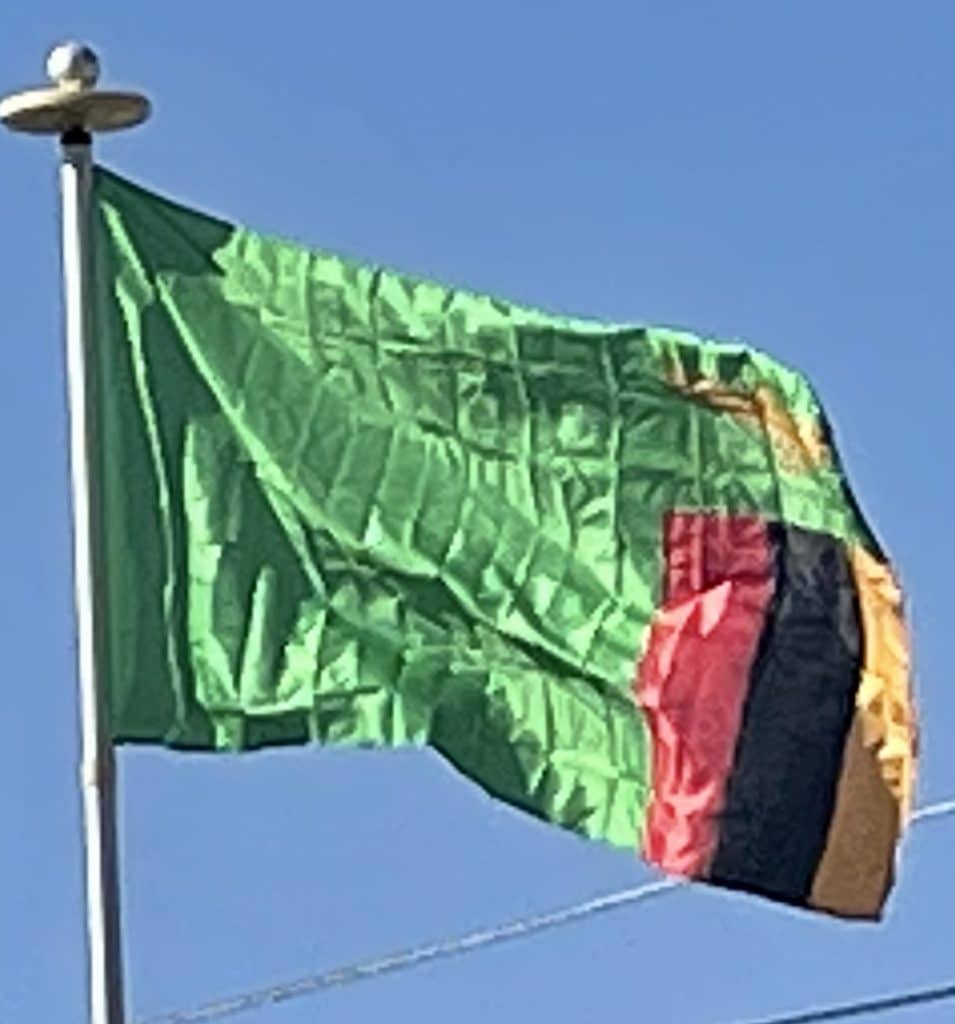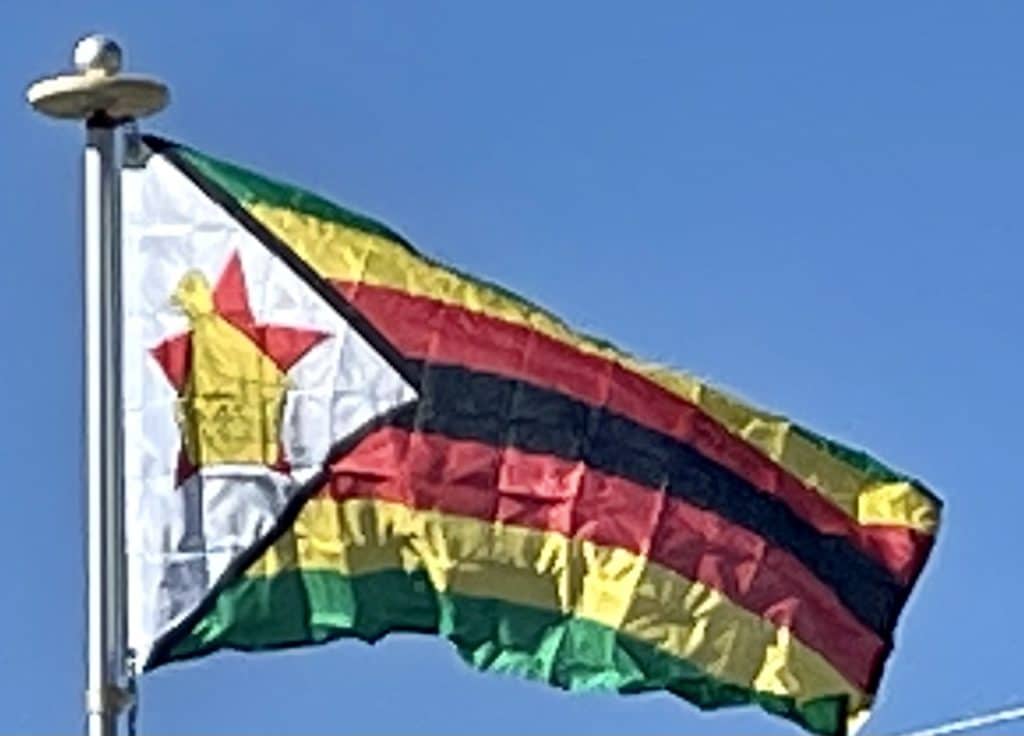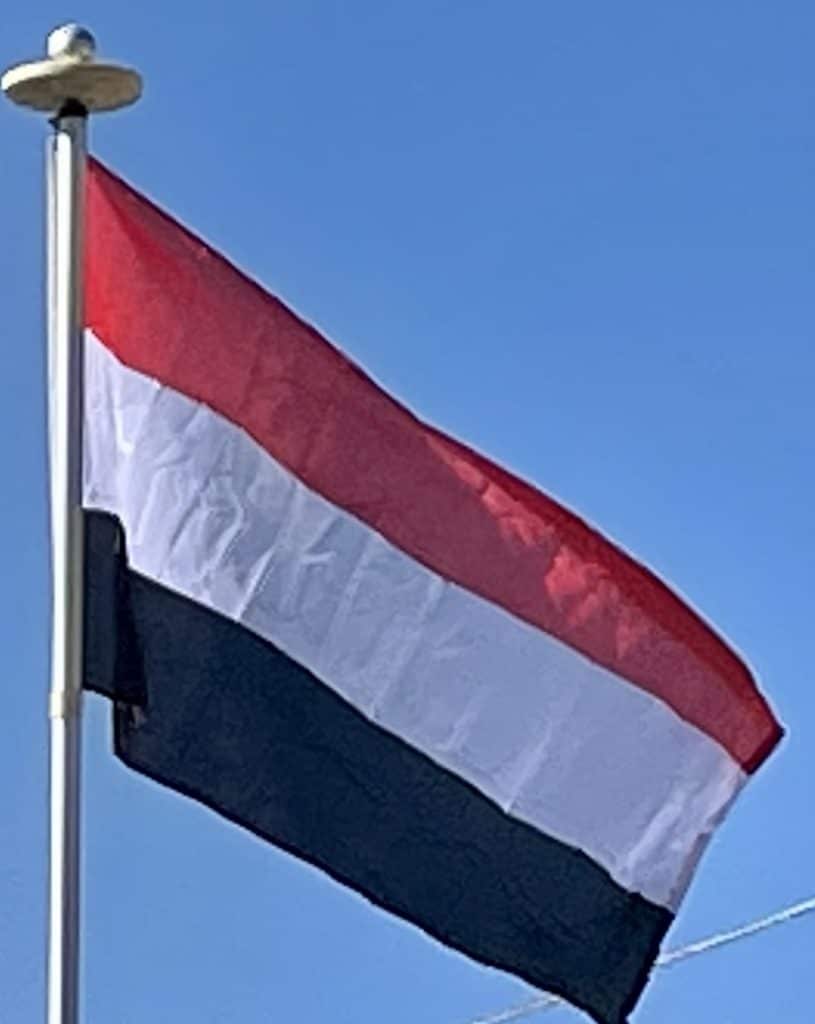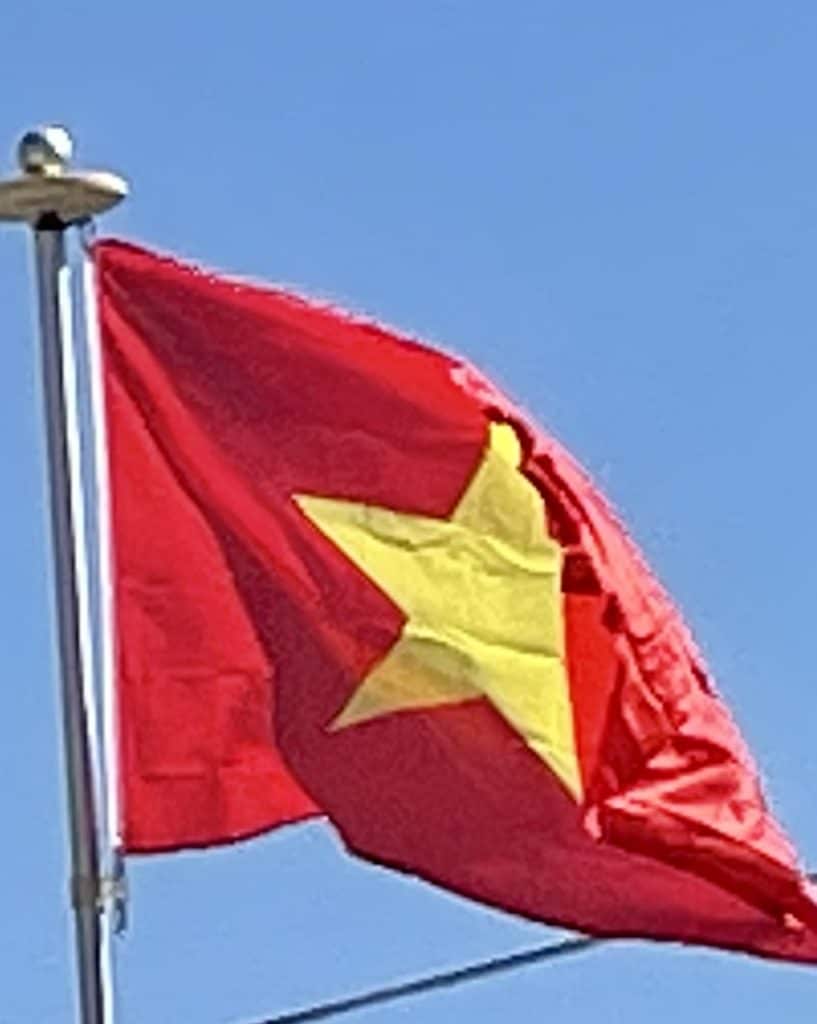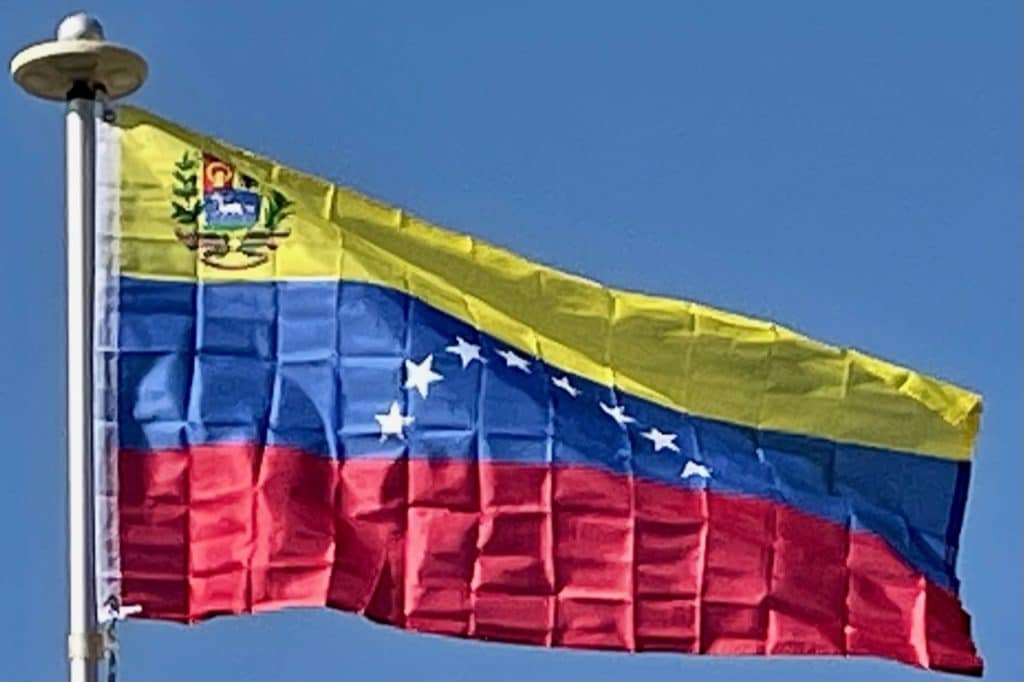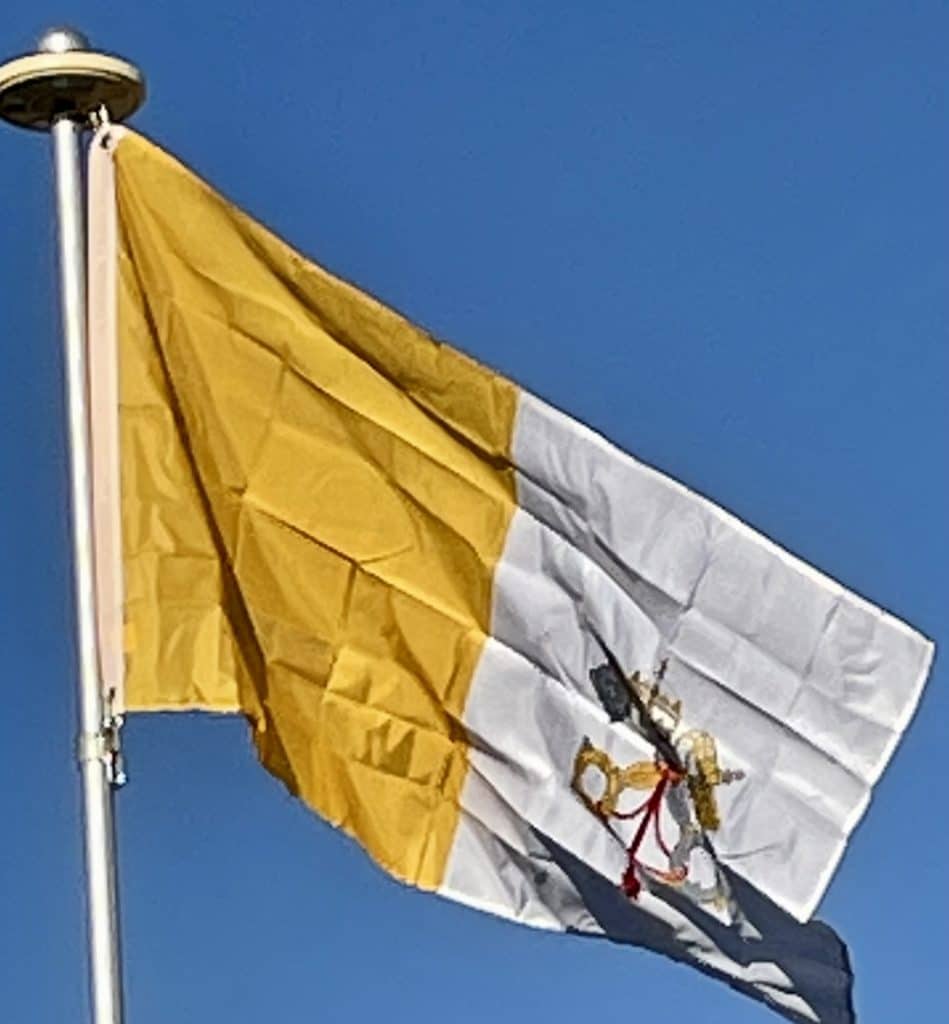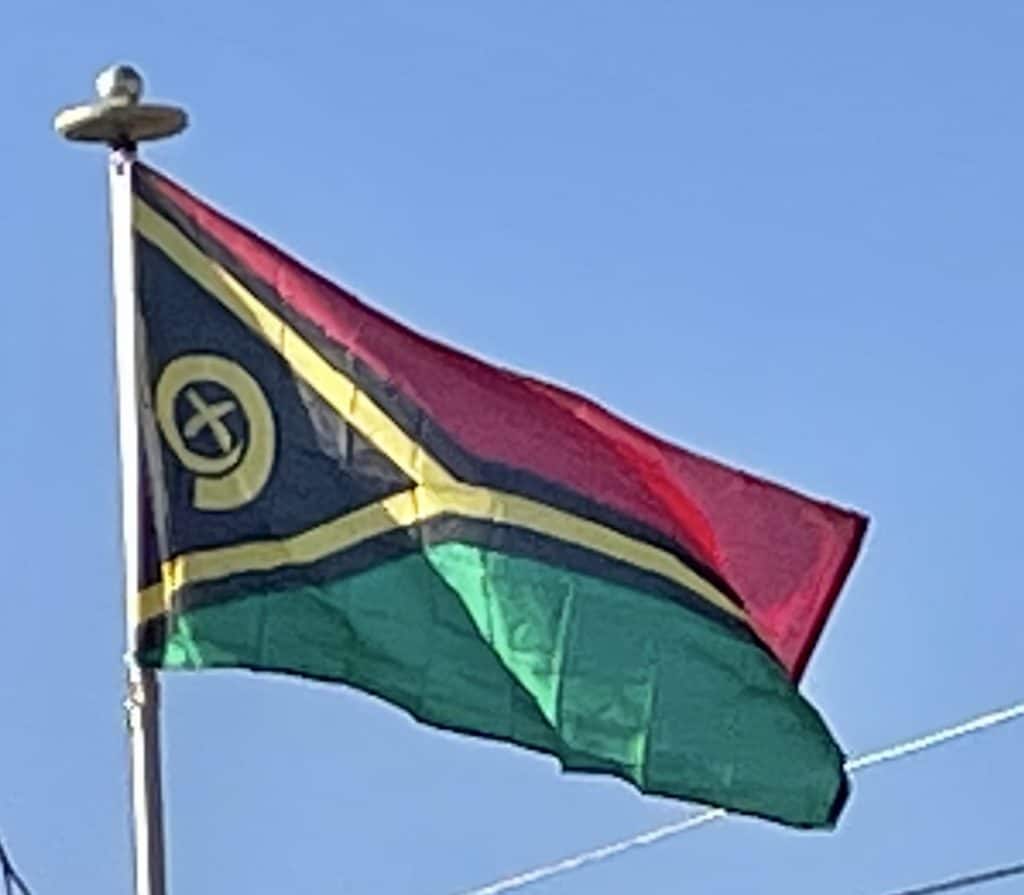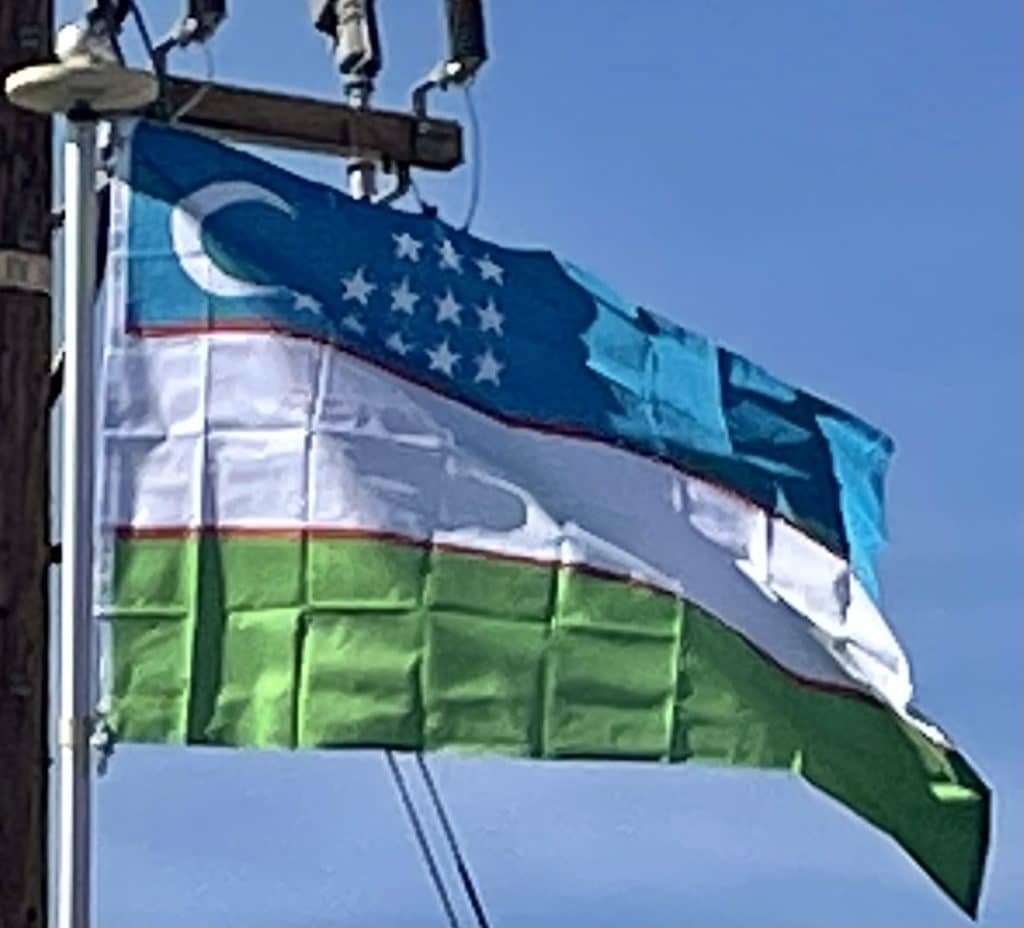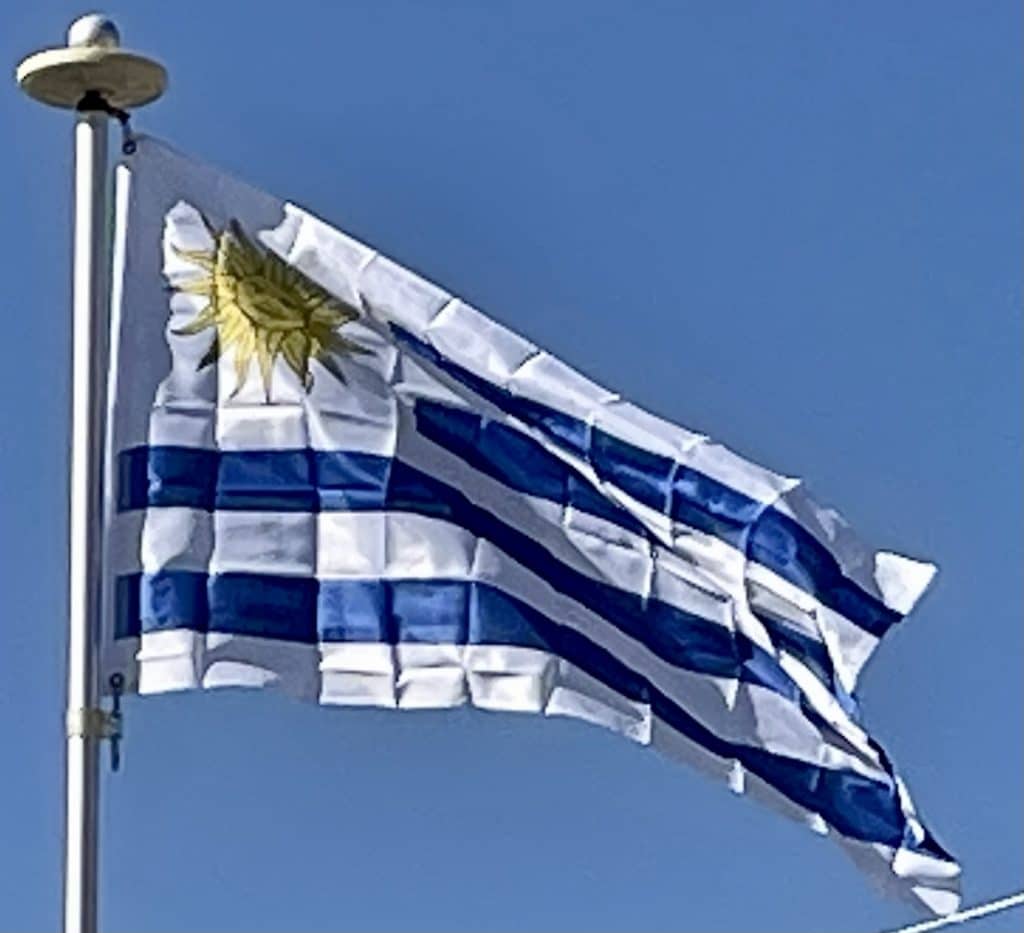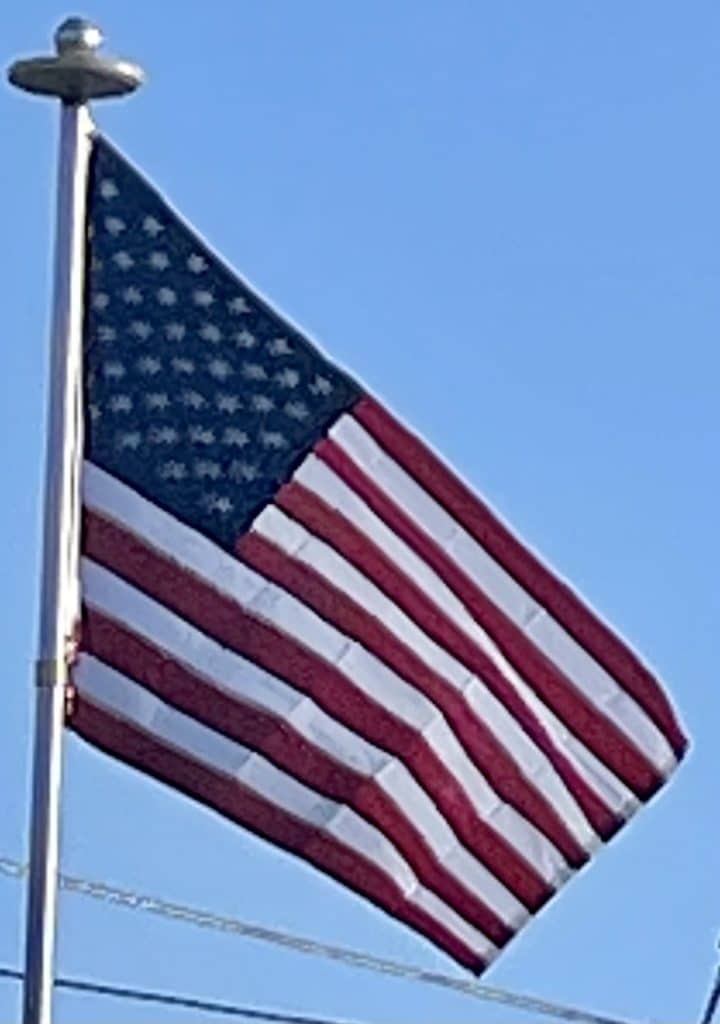Zimbabwe
The national flag of Zimbabwe consists of seven even horizontal stripes of green, gold, red and black with a white triangle containing a red 5-pointed star with a Zimbabwe Bird. The present design was adopted on 18 April 1980. The soapstone bird featured on the flag represents a statuette of a bird found at the ruins of Great Zimbabwe. The bird symbolizes the history of Zimbabwe; the red star beneath it officially stands for the nation’s aspirations but is commonly thought to symbolize socialism, and the revolutionary struggle for freedom and peace. The design is based on the flag of Zimbabwe’s ruling party, the Zimbabwe African National Union – Patriotic Front.
Zambia
The flag of Zambia is the national flag of Zambia. It was adopted upon independence on 24 October 1964, by the first Republican President Dr. Kenneth David Kaunda. Before that, Zambia was the British protectorate of Northern Rhodesia and used a defaced Blue Ensign as its flag.
The current flag is used as both national flag and ensign. It is green with an orange-colored African fish eagle in flight over a rectangular block of three vertical stripes, colored, from left to right: red, black and orange. The placement of the eagle and block of stripes at the flag’s fly is notable as most emblems and devices on flags are placed at center or at the hoist. Green stands for the nation’s lush flora, red for the nation’s struggle for freedom, black for the Zambian people, and orange for the land’s natural resources and mineral wealth. Additionally, the eagle flying above the colored stripes is intended to represent the people’s ability to rise above the nation’s problems.
The Zambian flag was slightly modified in 1996. The shade of green used in the 1964 flag was replaced with brighter and lighter green and the eagle was slightly altered so as to be more like the one used in the Zambian coat of arms.
Yemen
The flag of Yemen was adopted on May 22, 1990, the day that North Yemen and South Yemen were unified. The flag is basically the Arab Liberation Flag of 1952, introduced after the Egyptian Revolution of 1952 in which Arab nationalism was a dominant theme. The Arab Liberation Flag of 1952 served as the inspiration for the flags of both North and South Yemen prior to unification, as well as for the current flags of Egypt, Iraq, Sudan and Syria.
According to the official description, the red stands for unity and the bloodshed of martyrs, the white for a bright future, and the black for the supposed dark past. The flag’s design is also similar to that of the flag of the German Empire, albeit inverted. The flag is graphically identical to the flag of the Libyan Arab Republic from 1969 to 1972.
Vietnam
The flag of the Socialist Republic of Vietnam, was designed in 1940 and used during an uprising against the French in southern Vietnam that year. The red background symbolizes bloodshed, revolution and struggle. The yellow star represents the five main classes in Vietnamese society — workers, farmers, soldiers, intellectuals, and entrepreneurs.
Venezuela
The current eight stars flag of Venezuela was introduced in 2006. The basic design includes a horizontal tricolor of yellow, blue, and red, dating to the original flag introduced in 1811, in the Venezuelan War of Independence.
Further modifications have involved including a set of stars, multiple changes to the placement and number of stars and inclusion of an optional coat of arms at the upper-left corner. Along with Afghanistan, Bolivia, Costa Rica, Dominican Republic, Ecuador, El Salvador and Haiti it is one of only eight national flags in the world which has a depiction of its flag within the flag itself.
Vatican City
The flag of Vatican City was adopted on 7 June 1929, the year Pope Pius XI signed the Lateran Treaty with Italy, creating a new independent state governed by the Holy See. The Vatican City flag is modeled on the 1808 yellow and white flag of the earlier Papal States, to which a papal tiara and keys were later added. The Vatican (and the Holy See) also refers to it, interchangeably, as the flag of the Holy See.
Vanuatu
The flag of Vanuatu was adopted on 18 February 1980.
In 1977 a flag of almost the same colors and symbolism as the future national flag was designed by local artist Kalontas Malon and adopted by the Vanua’aku Pati. When the party led the New Hebrides to independence as Vanuatu in 1980, the colors of the party flag (red, green, black and yellow) were chosen to be the basis for the national flag on Independence Day, 30 July 1980. A parliamentary committee chose the final design based on submissions from local artists.
Uzbekistan
The flag of Uzbekistan consists of three horizontal azure, white and green bands separated by two thin red fimbriations, with a crescent moon and twelve stars at the canton. Adopted in 1991 to replace the flag of the Uzbek Soviet Socialist Republic (SSR), it has been the flag of the Republic of Uzbekistan since the country gained independence in that same year. The design of the present flag was partly inspired by the former one.
Uruguay
The national flag of Uruguay is one of the three official flags of Uruguay along with the flag of Artigas and the flag of the Treinta y Tres. It has a field of nine equal horizontal stripes alternating white and blue. The canton is white, charged with the Sun of May, from which 16 rays extend, alternating between triangular and wavy. The flag was first adopted by law on December 16, 1828, and had 19 stripes until July 11, 1830, when a new law reduced the number of stripes to nine. The flag was designed by Joaquín Suárez.
United States
The flag of the United States of America, often referred to as the American flag or the U.S. flag, is the national flag of the United States. It consists of thirteen equal horizontal stripes of red (top and bottom) alternating with white, with a blue rectangle in the canton (referred to specifically as the “union”) bearing fifty small, white, five-pointed stars arranged in nine offset horizontal rows, where rows of six stars (top and bottom) alternate with rows of five stars. The 50 stars on the flag represent the 50 states of the United States of America, and the 13 stripes represent the thirteen British colonies that declared independence from the Kingdom of Great Britain, and became the first states in the U.S. Nicknames for the flag include the Stars and Stripes, Old Glory, and the Star-Spangled Banner.
